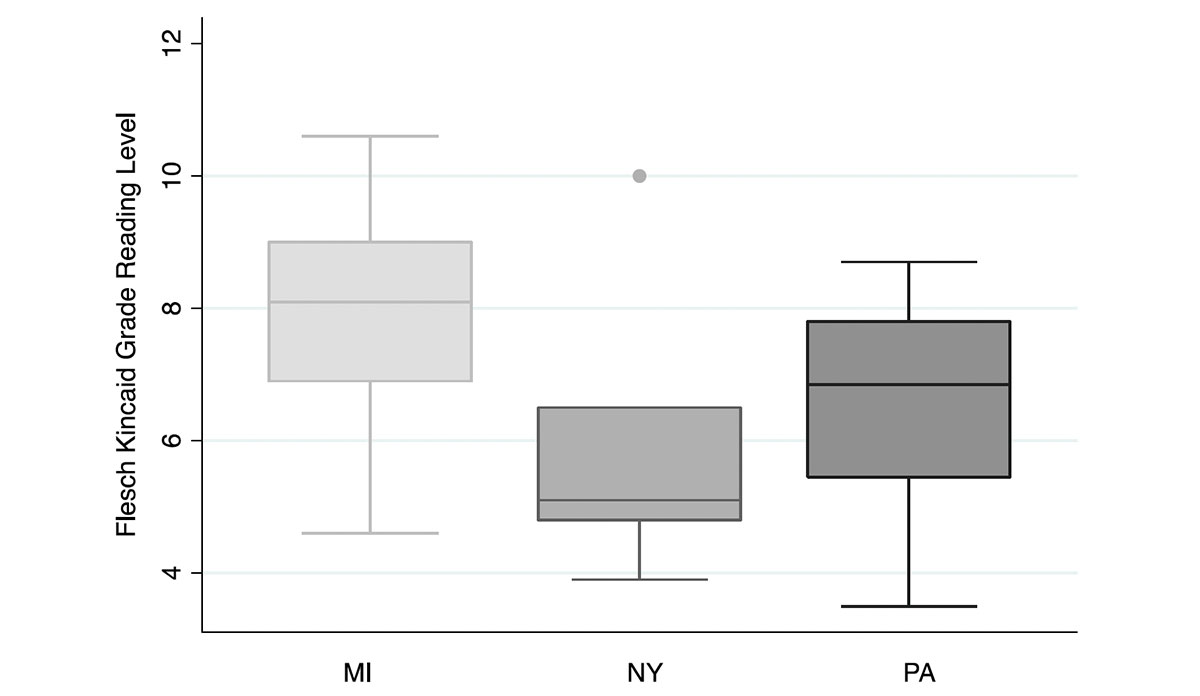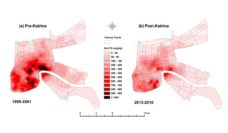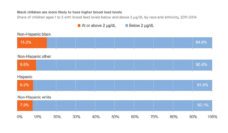The tables in the waiting rooms of doctors’ offices are often lined with pamphlets detailing the symptoms and risks of endless diseases. These brochures are supposed to educate patients and family on specific health conditions. However, studies have shown that many of these materials created for the general public are prepared at a higher reading level than recommended.
A study by Harriet Okatch and team analyzed online and print materials on lead poisoning prevention across three states. The researchers found materials ranging from a third-grade to a tenth-grade reading level. The graph above shows that Michigan’s materials had the highest reading level, followed by Pennsylvania, and lastly, New York. Although the majority of materials had a reading level between 6th and 8th grade, which has been suggested by the CDC as appropriate, the authors argue that that level is inaccessible to the target audience. One-fifth of the U.S. population reads below the 5th grade level. In the case of lead poisoning, a community’s average educational attainment is associated with higher risk of actual poisoning.
Of course reading levels are only relevant if the materials offered are actually being read, and leaving pamphlets on tables is not very effective for widespread communication. Tactical dissemination strategies are necessary to reach any target audience. Utilizing online strategies, building off of existing communication avenues, and integrating educational materials into more robust interventions, will all improve the access of information for at-risk communities, whether the risk is lead toxicity or any other preventable illness.
Databyte via Okatch, H., Pitts, E., Ritchey, E. et al. Readability levels and thematic content analysis of online and printed lead poisoning informational materials. BMC Public Health, October 2021.














